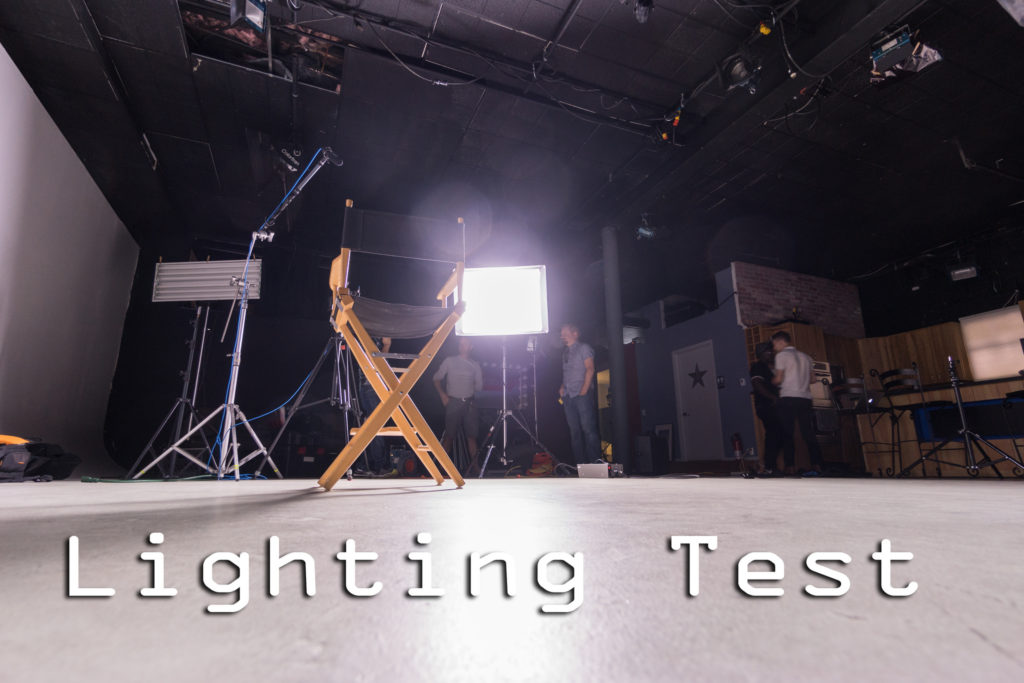
image courtesy of Dave Dugdale at learningvideo.com
Light tests… they’re part of the life of a filmmaker. We wanted to test different types of lights we have on our grip truck, and few that Dave Dugdale at learningvideo.com owns, to observe the nature of each light. There were an incredible number of directions we could take this light test, but I wanted to really try and come away with a practical look at what each light brings to the table unmodified. For the most part. Two of the lights had soft boxes as modifiers, the LED 150 and the HMI 400. The LED 150 is designed to always be used with the softbox, so we kept it, and the HMI 400 PAR featured a small chimera softbox because the talent would be blinded by the output of the bare (and harsh) light output.
Video Walkthrough
Here’s a walkthrough video where I provide some thoughts about the findings we found. You can also scroll down bellow to the images and see for yourself what you prefer, the video adds some additional thoughts looking through the shots.
Special thanks to the many guys that came together to make this happen: Dave Dugdale, Blayne Chastain, Peter Wigand, Allan McLain, Johnathan Nicolas, and Samuel Johnson. Another huge special thanks to an excellent studio space in Denver, skytheory.com
Camera Notes
Shot on the Red Epic at 5K HD resolution with a Rokinon 50mm cine DS lens, on a Miller 55 Arrow tripod, if you care about that… at varying apertures, noted below on each frame (this will provide a point of reference for light output, which while not the primary take away, is still a valid piece of information). We kept the color temperature locked at 5600k.
Light Notes
We compared X lights: Kino Diva 400, Kino 4 foot 4 bank, ILED C700S, ILED 150-56 softbox, Tungsten 650w Fresnel, and a Kobold HMI 400w PAR. Each light was placed in two positions – exactly 84 inches from the subject, measured from the light face, and half the distance at 42 inches from the subject.
Figuring out the test
The tricky part of this test was the number of variables we had to clamp down on. Light output, light color temperature, light distance, size of light, position of light, light height to subject, and so on and so on. Even before we rolled the first test, we debated back and forth about how best to come away with something of value from these tests. Indeed, the lights are all different beasts, we’re comparing apples and lions here, a lot of these lights aren’t in the same metaphorical food group. Nonetheless, the lights are on our grip truck, and they were asking to be tested together. And so we pressed on.
Frame grabs from the lights
Scroll down below for a few more thoughts on the tests…
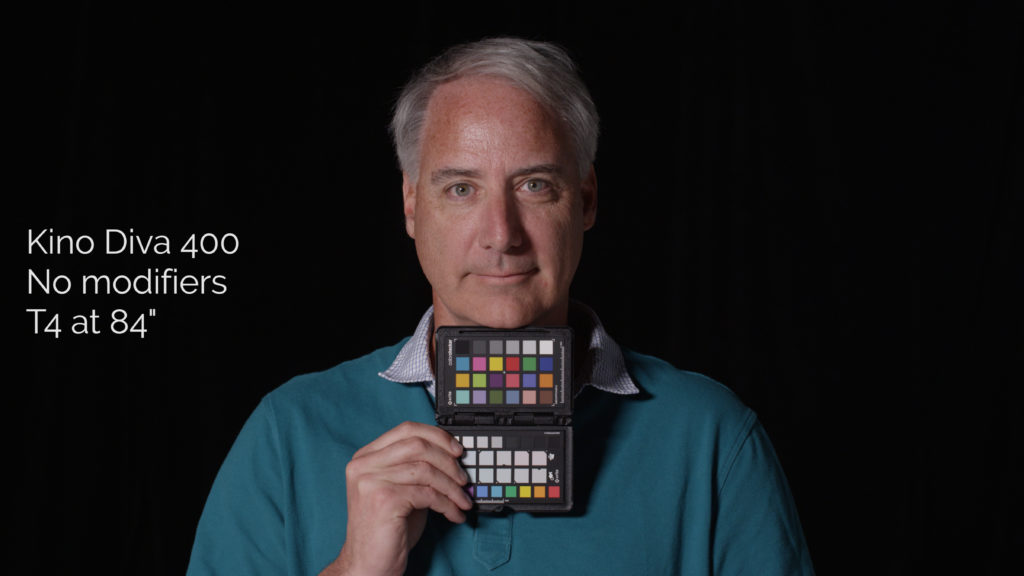
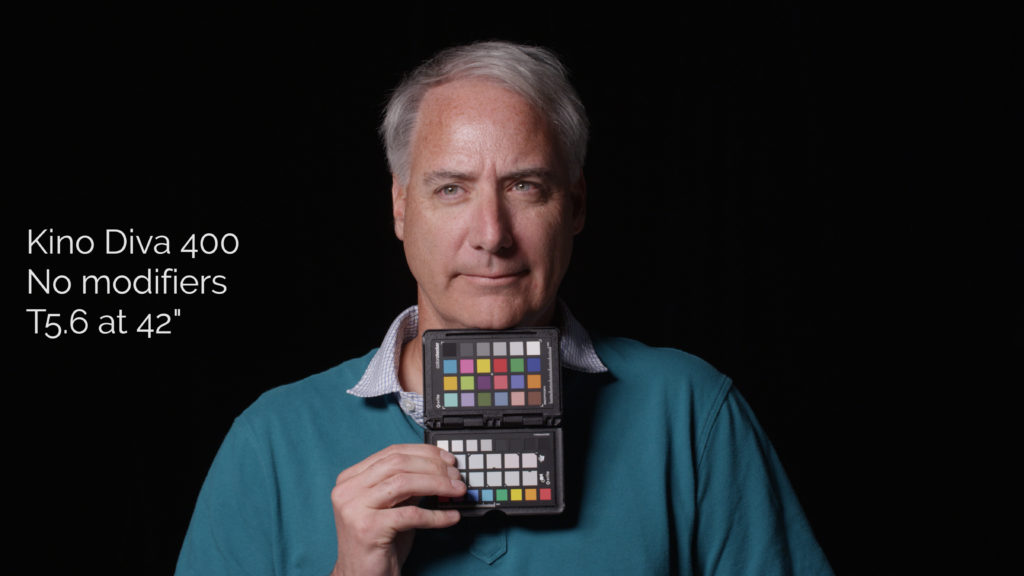
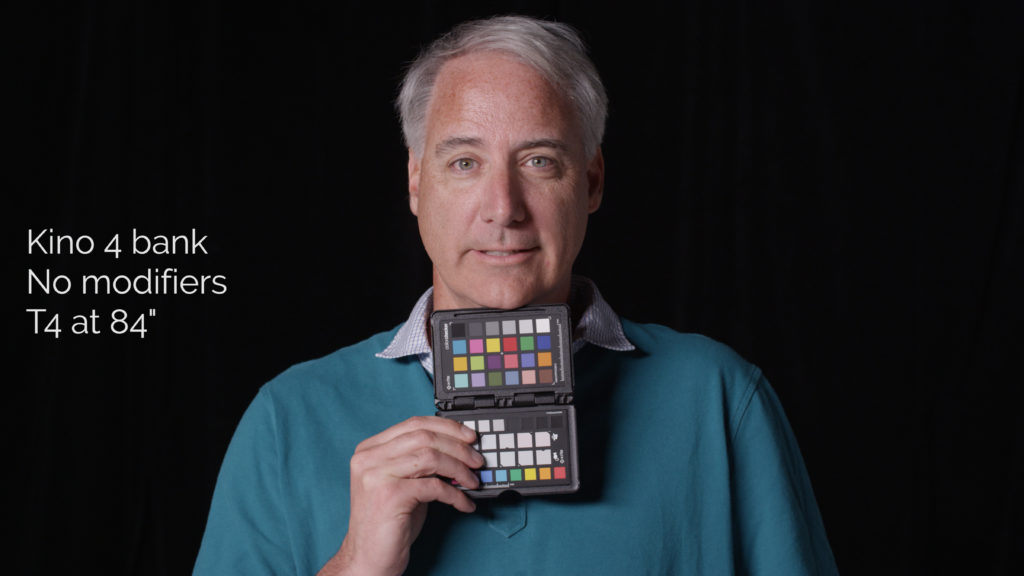
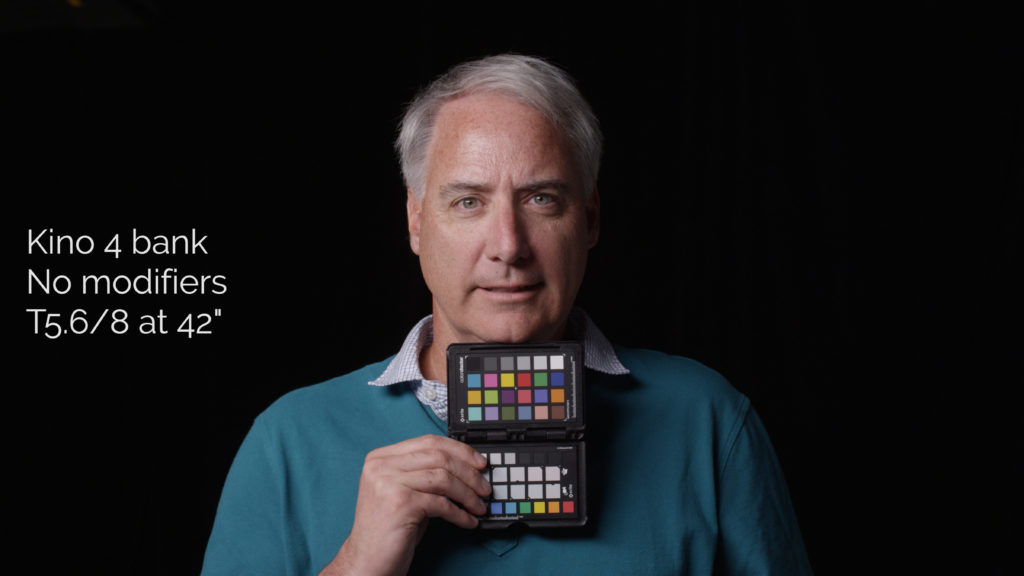
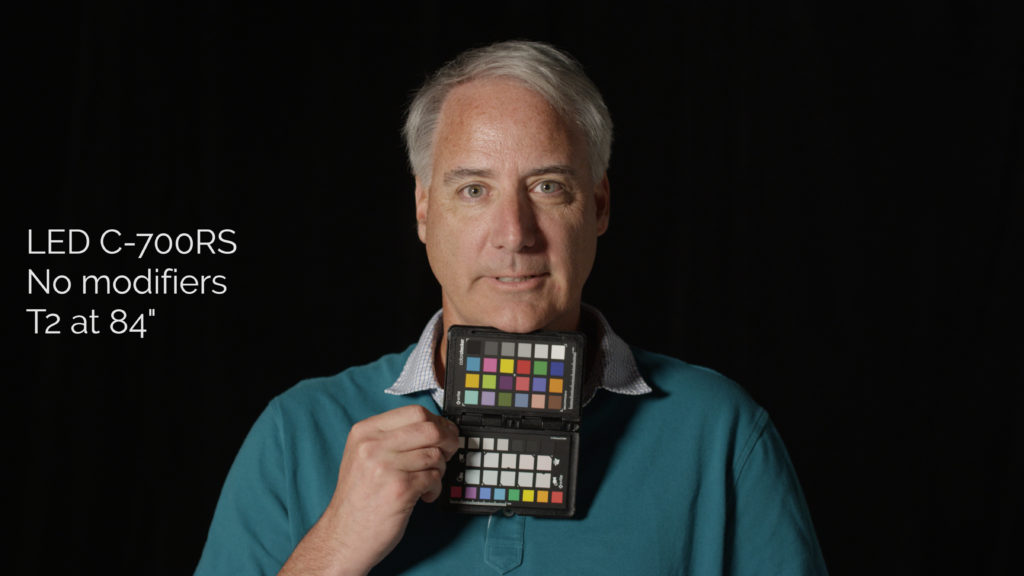
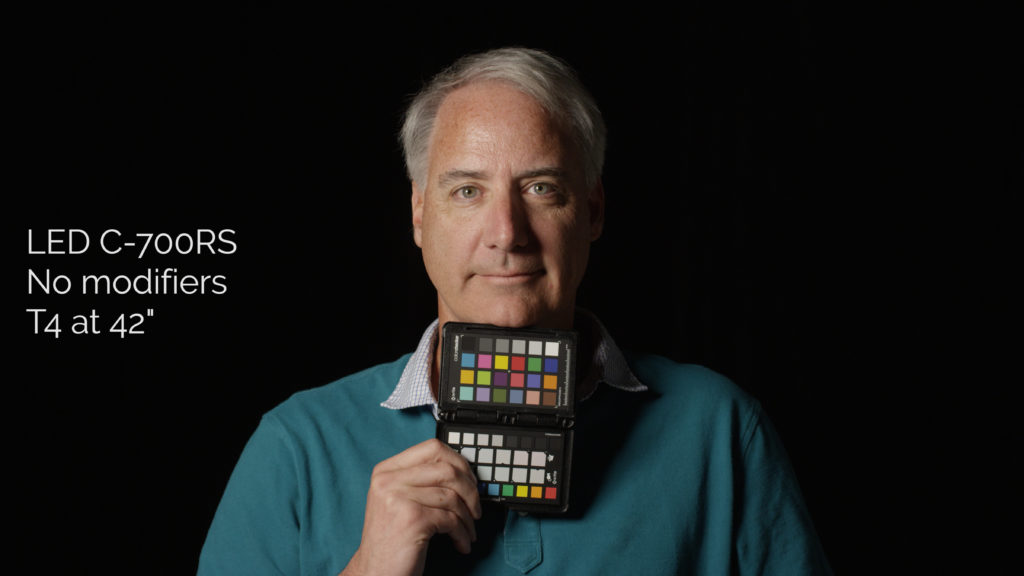
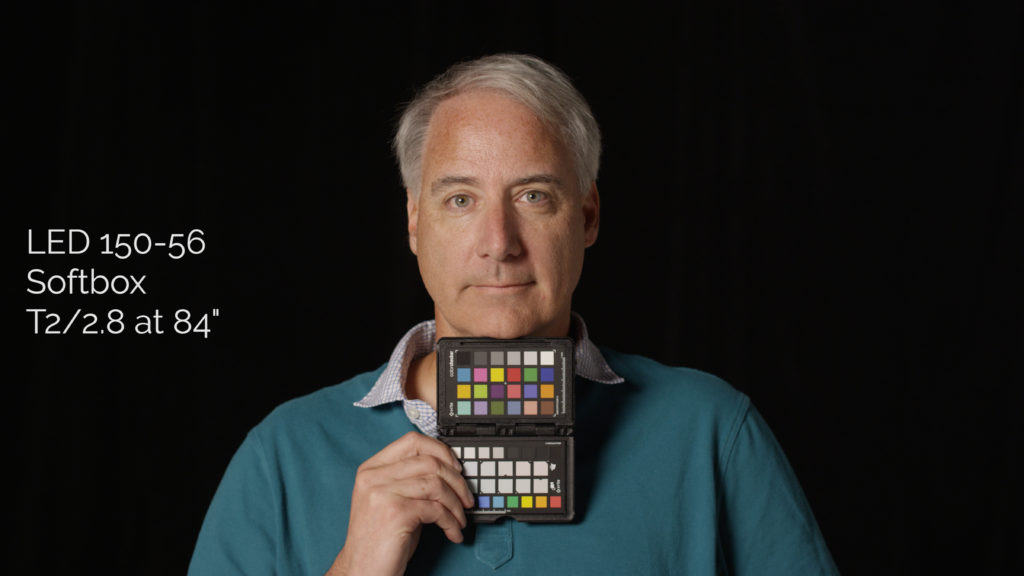
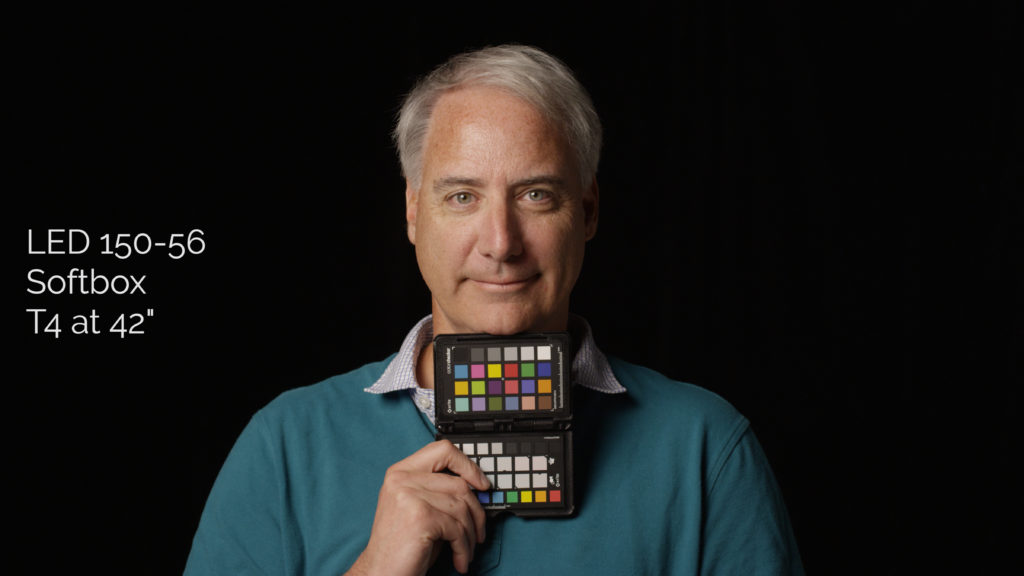
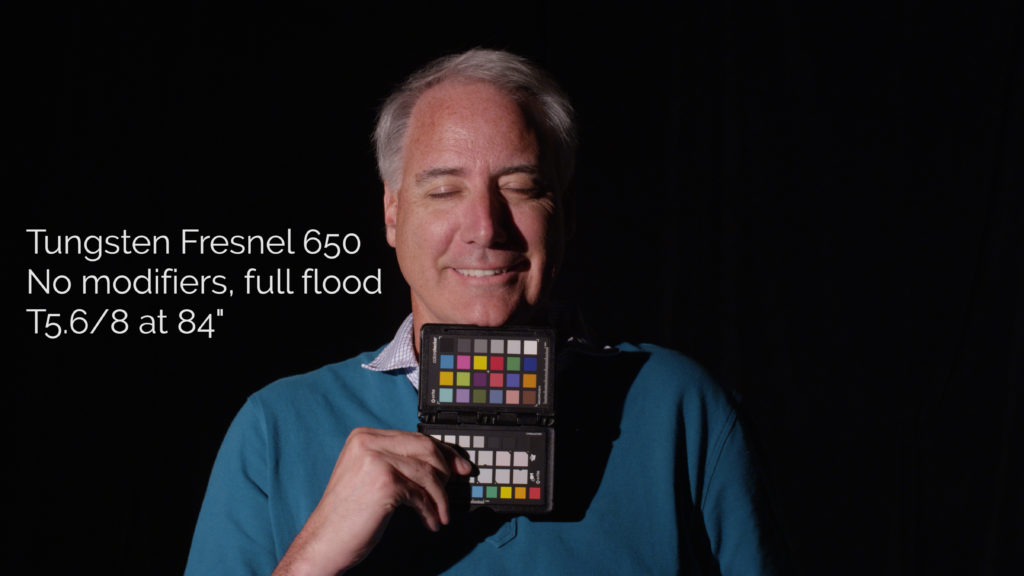
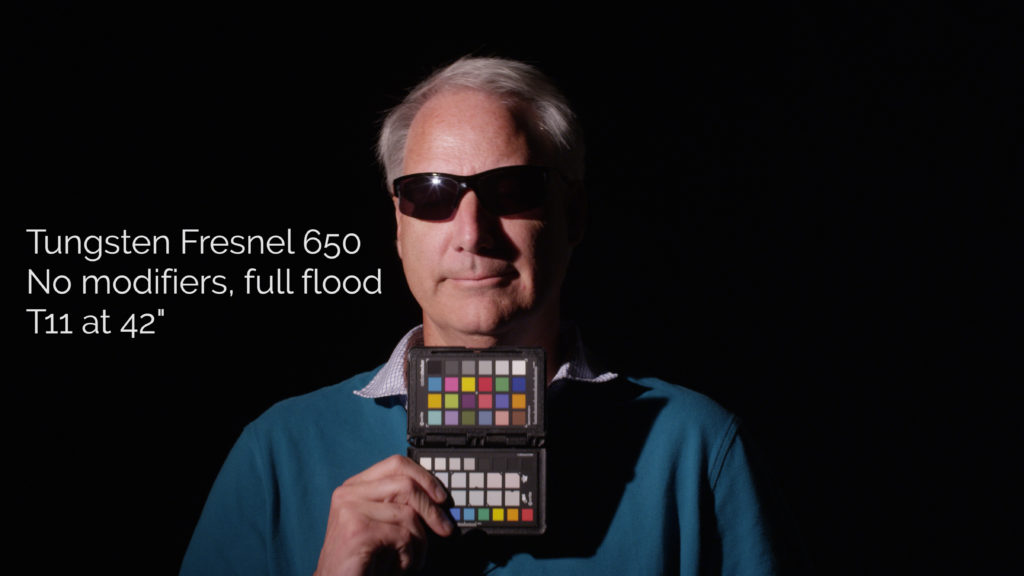
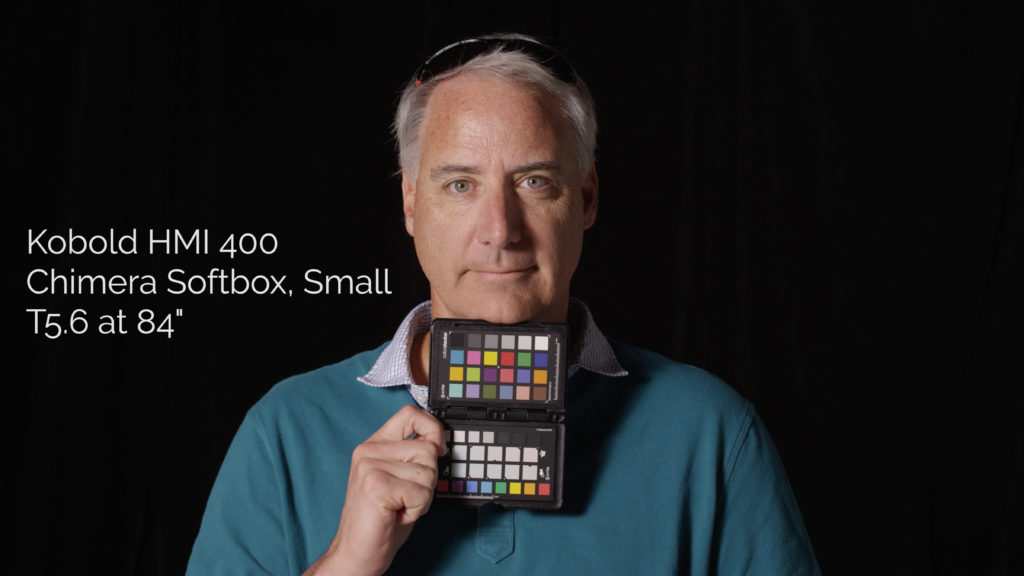
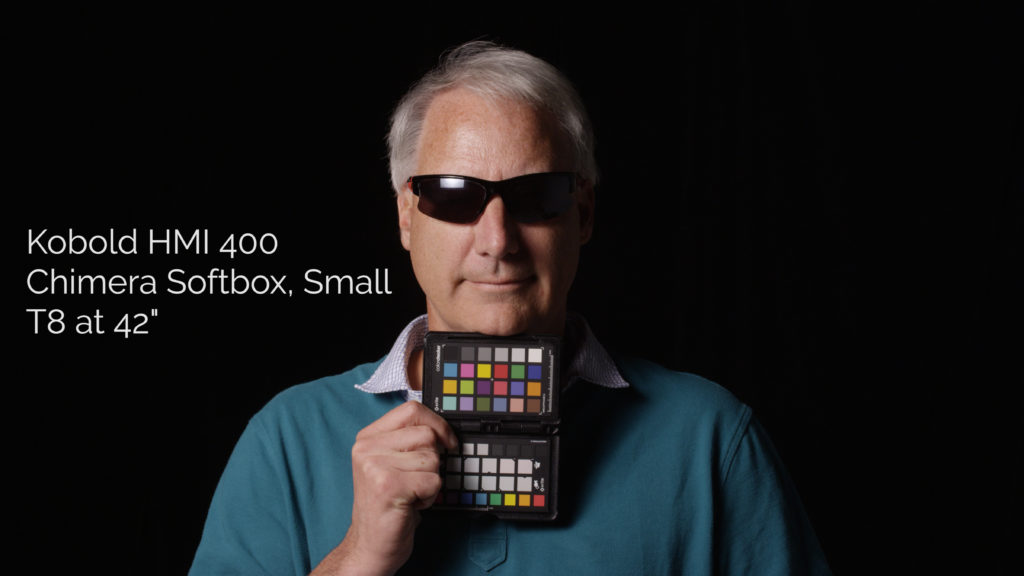
Aside from color temperature and light output, I find if fascinating to evaluate the “nature” of the light, or the way the shadows fall of and how specular the light feels on the subject. There’s some pretty substantial differences in how the lights work their magic. A lot of it has to do with physics, the age old equation of increasing the size of your source directly softening the shadows. So a larger source like the 4 bank is going to offer more wrap and a general push in part because the light is 4 feet wide, versus say the 20.5″ wide C700 LED light. Set at the same angle, both lights offer different characteristics.
A note on hard lights
On the other end of the spectrum, looking at the fresnel, the hard cut of shadows lends itself to a distinct and controllable look (this would be a similar effect small lights like the dedos offer). The beauty of the fresnel is the tremendous level of control you can have on the beam width of your light. In certain situations this is everything. We did a shoot a while back with a 5 piece ensemble that needed to be lit in a room that was only 12-14 feet deep. The director wanted a high contrast look with pools of lights creating the feeling of an Irish-style tavern, but with limited space and a lot of subjects (all of them playing sizable instruments) we had to reign in the light in the room and clamp down on every single fixture. We pulled off a great look with about 10 fresnel lights of various sizes, and it had a really nice feel that any more general light wouldn’t have been able to achieve. I just feel the need to add in my short note on hard lights because so many shoots I’m on these days are looking for bigger softer sources (also related to the decreasing time we have to light, but that’s for another blog post). Which is great, and I’m happy to go with that all day long. But I greatly appreciate the tact and experience it takes to master the hard lights.
Would love to hear your thoughts on how we approached the test, what you’d do different, and what you’d like to see next! If this is well received I imagine we may be back to expand the series into a variety of new directions!

Comments
Great post, my friend! I enjoyed seeing the comparisons, and I feel the same about the hard lights. I’m partial to my old Mole-Richardsons and continue to use them. However, with the push to be more time/energy conscious, I’ve become increasingly interested in the LED bulbs that plug into our old tungsten enclosures. It seems like LEDs in spot/flood fixtures might be the future for those of us looking for a solid compromise that maintains the versatility of our trusty tungstens. Thanks for your hard work, guys!
thanks for reading Page! I admire your tungsten kit, no lie! So many light options these days it’s hard to keep up with the technology. If you have a moment check out the Quasar LED tubes, they’re like kino flo tubes but LED, dimmable and color adjustable. Been hearing somethings about them lately.